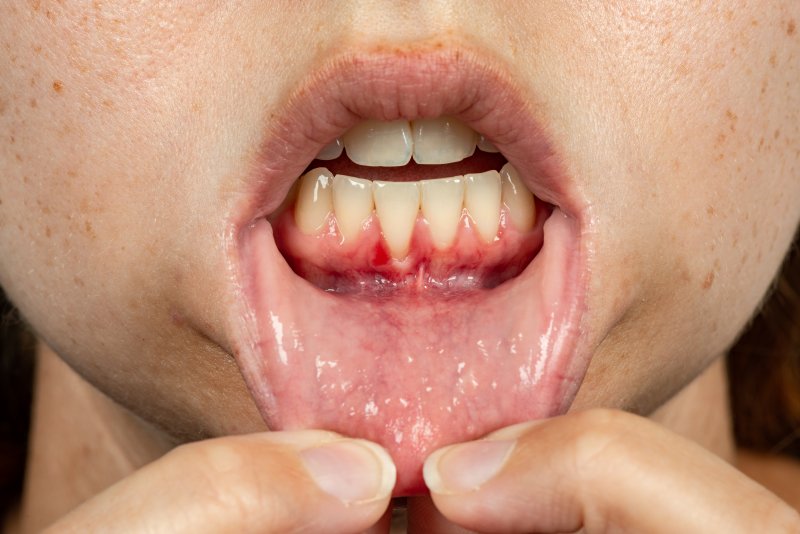Periodontitis
What is periodontitis?
Periodontitis is a serious form of gum disease. It’s a bacterial infection that starts by inflaming the soft tissues around your teeth. Left untreated, it erodes the bone that supports your teeth, leading to mobility and tooth loss.
What causes periodontitis?
The main cause of periodontitis is poor oral hygiene. Bacteria cling to plaque and tartar on your teeth surfaces. If you don’t clean your teeth as well or as often as you should, bacteria travel down beneath your gum line, where your toothbrush and floss can’t reach. These harmful bacteria erode the tissues that support your teeth, leading to infection, bone loss and tooth loss.
What are the symptoms of periodontitis?
Healthy gums are firm to the touch and fit snugly around your teeth. In comparison, periodontitis symptoms include:
- Reddish or purplish gums.
- Swollen gums.
- Gums that bleed easily.
- Tender gums.
- Bad breath.
- Pus (infection) around your gum line.
- Loose teeth.
- Tooth loss.
- Gum recession (when your gums pull away from your teeth).
- Pain when chewing.
- New gaps or spaces between your teeth.
- Changes in the way your teeth fit together.
How is periodontitis diagnosed?
A dentist can diagnose periodontitis during a dental examination. They’ll:
- Ask you about your symptoms and medical history.
- Examine your gums for signs of inflammation.
- Use a periodontal probe, which is like a tiny ruler, to see if you have pockets around your teeth. This test won’t hurt.
- Take dental X-rays to check for bone loss.
- Possibly refer you to a periodontist, a gum disease specialist.

